Diploma Trainee Engineer
500+ Diploma Trainee Engineer Interview Questions and Answers
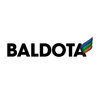
Asked in MSPL

Q. Which of the following laws states that in any electrical network, the algebraic sum of the current meeting at a point is zero?
Kirchhoff's Current Law states that the algebraic sum of currents meeting at a point in an electrical network is zero.
Kirchhoff's Current Law is also known as the junction rule.
It is based on the principle of conservation of charge.
The law applies to both DC and AC circuits.
It is used to analyze and solve complex electrical circuits.
An example of applying Kirchhoff's Current Law is when determining the current flowing through different branches of a parallel circuit.

Asked in Adani Group

Q. Why use Electrical CAD? How draw Symbol of perpendicularity
Electrical CAD is used to design and document electrical systems. Perpendicularity symbol is drawn using CAD tools.
Electrical CAD helps in creating accurate and detailed electrical designs
It allows for easy modification and updating of designs
CAD tools can be used to draw symbols for various electrical components and properties
To draw the symbol of perpendicularity, use the CAD tool for drawing lines and add a small square at the intersection of the lines
The perpendicularity ...read more
Diploma Trainee Engineer Interview Questions and Answers for Freshers

Asked in Mahindra & Mahindra

Q. What could be the possible reasons for heavy white smoke?
Possible reasons for heavy white smoke
Burning of coolant in the engine
Leaking head gasket
Faulty fuel injectors
Burning of transmission fluid
Excessive condensation in the exhaust system
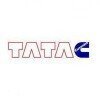
Asked in Tata Cummins

Q. What types of engines does Tata Cummins manufacture?
Tata Cummins engines are of two types - B and C series.
Tata Cummins engines are manufactured by Tata Motors and Cummins Inc.
B series engines are 3.9L to 5.9L in displacement and are used in light and medium-duty vehicles.
C series engines are 8.3L to 15L in displacement and are used in heavy-duty vehicles.
Tata Cummins engines are known for their fuel efficiency and reliability.


Q. Define one cycle of refrigeration with thermodynamic processes.
Refrigeration cycle involves four thermodynamic processes: compression, condensation, expansion, and evaporation.
The refrigerant is compressed by a compressor, increasing its temperature and pressure.
The high-pressure refrigerant then flows through a condenser, where it releases heat and condenses into a liquid.
The liquid refrigerant then passes through an expansion valve, where it undergoes a pressure drop and becomes a low-pressure liquid.
The low-pressure liquid refrigerant...read more

Asked in MSPL

Q. What precautions should one take before replacing a fuse?
Before replacing a fuse, one should take certain precautions to ensure safety.
Ensure that the power supply is turned off before replacing the fuse.
Identify the correct type and rating of the fuse to be replaced.
Use appropriate safety equipment such as insulated gloves and goggles.
Inspect the fuse holder for any signs of damage or overheating.
Check for any underlying issues that may have caused the fuse to blow.
Follow the manufacturer's instructions and guidelines for fuse rep...read more
Diploma Trainee Engineer Jobs



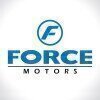
Asked in Force Motors

Q. What is the difference between a jig and a fixture?
A jig is a tool used to guide and control the movement of a cutting tool, while a fixture is used to hold and position a workpiece during machining.
Jigs are used to guide the cutting tool, while fixtures hold the workpiece.
Jigs are used in drilling, reaming, and tapping operations, while fixtures are used in milling, grinding, and turning operations.
Jigs are often custom-made for specific operations, while fixtures can be standardized and reused.
Jigs are typically more comple...read more

Asked in Yamaha Motor

Q. 1.What types of material using in engine. 2. How many millimetre in 1 kilometre.
The types of materials used in engines vary depending on the specific engine type and its components.
Engines can be made of various materials such as cast iron, aluminum, steel, and alloys.
Different engine parts may require different materials, for example, pistons are often made of aluminum alloy.
Engine components like cylinder heads, crankshafts, and connecting rods can be made of cast iron or steel.
Some engines may also use specialized materials like carbon fiber for light...read more
Share interview questions and help millions of jobseekers 🌟


Asked in Yamaha Motor

Q. What is moulding,how many types, what is forging.what is LPDC , what is name of material use to moulding.
Moulding is a manufacturing process of shaping liquid or pliable raw material using a rigid frame called a mold.
Types of moulding: injection moulding, blow moulding, compression moulding, rotational moulding, etc.
Forging is a manufacturing process of shaping metal using compressive forces.
LPDC stands for Low Pressure Die Casting, a casting process for producing metal parts.
Materials used for moulding: plastic, rubber, metal, glass, etc.
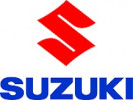
Asked in suzuki motor gujarat

Q. What do you know about G-code or M-code? G-code and M-code are programming language used to control CMC Computer Numerical Control machine such as mills, lathe,and 3D printer G-code Control motion (e.g, move,cu...
read moreG-code and M-code are programming languages for controlling CNC machines like mills, lathes, and 3D printers.
G-code commands control the movement of the machine, such as G0 for rapid positioning and G1 for linear interpolation.
M-code commands manage machine functions, like M3 for starting the spindle and M8 for turning on the coolant.
G-code is primarily used for defining tool paths, while M-code is used for auxiliary functions.
Example of G-code: G01 X10 Y10 F100 (move to coor...read more

Asked in suzuki motor gujarat

Q. What is the purpose of switch gear? Main purpose of switch gear 1 Protection E.g, short circuit, overload 2 Control switch circuit onor of safe maintenance 3. Isolation Disconnect equipment of in inspection, ma...
read moreSwitchgear is essential for controlling, protecting, and isolating electrical equipment in power systems.
Protection: Switchgear protects electrical circuits from faults like short circuits and overloads.
Control: It allows for the control of electrical circuits, enabling safe operation and maintenance.
Isolation: Switchgear provides isolation of equipment for safe inspection and maintenance.
System Stability: It helps maintain voltage and current levels, ensuring stable operatio...read more
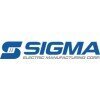

Q. How to convert AC to DC & Drawing the Circuit Diagram?
AC can be converted to DC using a rectifier circuit. The circuit diagram includes a transformer, diodes, and a filter capacitor.
AC to DC conversion is achieved using a rectifier circuit.
A rectifier circuit consists of a transformer, diodes, and a filter capacitor.
The transformer steps down the AC voltage to a lower level.
Diodes are used to convert the AC voltage to pulsating DC.
The filter capacitor smoothens the pulsating DC to obtain a steady DC output.
The circuit diagram ca...read more


Q. What is the least count ? Vernier caliper least count?
The least count is the smallest measurement that can be made using a measuring instrument.
Least count is the resolution or precision of a measuring instrument.
It determines the smallest unit of measurement that can be read on the instrument.
For a vernier caliper, the least count is the difference between one main scale division and one vernier scale division.
The formula to calculate the least count of a vernier caliper is: Least Count = (1 main scale division) - (1 vernier sc...read more
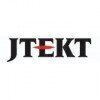
Asked in JTEKT

Q. Rectifier, types of motor, difference between servo motor and induction motor...etc
Rectifier, types of motor, difference between servo motor and induction motor
Rectifier is an electrical device that converts alternating current (AC) to direct current (DC)
Types of motors include DC motors, AC motors, servo motors, and induction motors
Servo motors are used in applications that require precise control of position, velocity, and acceleration
Induction motors are commonly used in industrial applications due to their robustness and simplicity
Difference between ser...read more

Asked in PGP Glass

Q. What are the major specifications you consider when buying an AC?
Major specifications to consider when buying an AC include cooling capacity, energy efficiency, noise level, and brand reputation.
Cooling capacity measured in BTUs or tons
Energy efficiency rating like EER or SEER
Noise level in decibels
Brand reputation for reliability and customer service

Asked in Larsen & Toubro Limited

Q. What is a phase diagram? Please describe it.
A phase diagram is a graphical representation of the relationships between different phases of a substance at different conditions.
A phase diagram shows the boundaries between different phases (solid, liquid, gas) of a substance as a function of temperature and pressure.
It helps in understanding the conditions under which a substance exists in different phases.
Phase diagrams can also indicate the presence of phase transitions, such as melting, boiling, and sublimation.
The dia...read more

Asked in BKT Tyres

Q. How many operation We can do on Lathe machine and it's name also
There are various operations that can be performed on a lathe machine, including turning, facing, drilling, boring, knurling, and threading.
Turning - used to create cylindrical parts
Facing - used to create a flat surface at the end of a workpiece
Drilling - used to create holes in the workpiece
Boring - used to enlarge existing holes
Knurling - used to create a textured pattern on the surface of the workpiece
Threading - used to create threads on the workpiece

Asked in Force Motors

Q. What are the differences between diesel and petrol engines?
Diesel engines use compression ignition while petrol engines use spark ignition.
Diesel engines use compression ignition while petrol engines use spark ignition
Diesel engines are more fuel efficient than petrol engines
Petrol engines generally have higher power output compared to diesel engines
Diesel engines have higher torque at lower RPMs
Diesel engines are typically more durable and have longer lifespans than petrol engines

Asked in GE Aerospace

Q. What is a lathe machine?
A lathe machine shapes materials by rotating the workpiece and using a cutting tool to create symmetrical designs.
Used for turning, drilling, and threading operations.
Commonly used in metalworking to create parts like shafts and gears.
Can also work with wood for making furniture or decorative items.
CNC lathes offer automated precision for complex designs.

Asked in Cummins

Q. What is a resistor in electronics?
A resistor is an electronic component that limits the flow of electric current in a circuit.
Resistors are used to control the amount of current flowing through a circuit.
They are passive components that dissipate energy in the form of heat.
Resistors are measured in ohms (Ω) and have color-coded bands to indicate their resistance value.
They can be fixed resistors with a specific resistance value or variable resistors that can be adjusted.
Resistors are commonly used in voltage ...read more

Asked in suzuki motor gujarat

Q. What is power transmission?
Power transmission is the transfer of mechanical energy within machines or systems to perform work efficiently.
Involves components like gears, belts, and shafts to transfer energy.
Used in vehicles to transmit engine power to wheels (e.g., drivetrain).
Hydraulic systems use fluid power transmission for heavy machinery (e.g., excavators).
Electrical power transmission involves moving electrical energy over distances (e.g., power lines).
Applications include manufacturing equipment...read more

Asked in Escorts Kubota Limited

Q. What is the difference between a four-stroke and a two-stroke engine?
Four stroke engines have separate intake, compression, power, and exhaust strokes, while two stroke engines combine these strokes.
Four stroke engines have a longer cycle and require more parts than two stroke engines.
Four stroke engines are more fuel efficient and produce less pollution than two stroke engines.
Two stroke engines are simpler in design and have a higher power-to-weight ratio than four stroke engines.
Two stroke engines are commonly used in small power tools and ...read more

Asked in JTEKT

Q. What is transformer, types of transformer, step down t/f, step up t/f...
A transformer is an electrical device that transfers electrical energy from one circuit to another through electromagnetic induction.
Transformers are used to either step up or step down voltage levels.
Step down transformers decrease voltage levels, while step up transformers increase voltage levels.
Types of transformers include power transformers, distribution transformers, isolation transformers, autotransformers, and instrument transformers.
Power transformers are used in po...read more

Asked in PGP Glass

Q. What are backward and forward strokes in a shaping machine?
Backward stroke is the return stroke of the ram in shaping machine, while forward stroke is the cutting stroke.
Backward stroke is when the ram moves away from the workpiece
Forward stroke is when the ram moves towards the workpiece to make the cut
Backward stroke is non-cutting, while forward stroke is cutting
Backward stroke allows the tool to clear the workpiece, while forward stroke performs the cutting operation

Asked in Pinnacle Industries

Q. What is the difference between Mechanical and Automobile engineering?
Mechanical engineering deals with designing and manufacturing mechanical systems, while Automobile engineering focuses on designing and manufacturing vehicles.
Mechanical engineering involves designing and manufacturing various mechanical systems such as engines, HVAC systems, and manufacturing equipment.
Automobile engineering specifically focuses on designing and manufacturing vehicles like cars, motorcycles, and trucks.
Mechanical engineers work on a wide range of projects be...read more

Asked in Paharpur Cooling Towers

Q. make a list of maximum 100 question of your favourite technical subject. and 20 question from each subject.
List of 100 questions from favourite technical subject
What is the purpose of a heat exchanger?
Explain the difference between a centrifugal pump and a reciprocating pump.
How does a PID controller work in a control system?
What is the difference between stress and strain in materials?
Explain the concept of Ohm's Law in electrical circuits.
What is the function of a capacitor in an electronic circuit?
Describe the operation of a diesel engine.
What are the different types of welding...read more

Asked in HFCL Limited

Q. What is the difference between Current Transformers (CT) and Potential Transformers (PT)?
CTs measure current, while PTs measure voltage in electrical systems for protection and metering.
CTs are used to step down high current levels to a manageable value for measurement.
PTs are used to step down high voltage levels to a lower value for measurement.
Example of CT: Used in power plants to monitor generator output.
Example of PT: Used in substations to monitor line voltage.
CTs provide current input for protective relays, while PTs provide voltage input.

Asked in Electrosteel Casting

Q. How to generate steam in boiler & which type of boiler
Steam in a boiler is generated by heating water to its boiling point. There are various types of boilers, such as fire tube, water tube, and electric boilers.
Boilers generate steam by heating water to its boiling point
Types of boilers include fire tube, water tube, and electric boilers
Fire tube boilers have hot gases flowing through tubes that are surrounded by water
Water tube boilers have water flowing through tubes that are heated by combustion gases
Electric boilers use ele...read more

Asked in Hindustan Syringes & Medical Devices

Q. What is the difference between PNP and NPN transistors?
PNP and NPN transistors are two types of bipolar junction transistors with opposite polarity.
PNP has a layer of N-type semiconductor sandwiched between two layers of P-type semiconductor, while NPN has a layer of P-type semiconductor sandwiched between two layers of N-type semiconductor.
In PNP, the current flows from the emitter to the base and then to the collector, while in NPN, the current flows from the emitter to the collector through the base.
PNP is used in high-side sw...read more

Asked in Bajaj Motors

Q. What is know about CNC and VMC? What is mechanical engineering ? Difference between manufacturing and production? Etc
CNC stands for Computer Numerical Control and VMC stands for Vertical Machining Center. Mechanical engineering involves designing, analyzing, and manufacturing mechanical systems. Manufacturing is the process of converting raw materials into finished products, while production refers to the overall process of creating goods.
CNC is a manufacturing process that uses computerized controls to operate machine tools.
VMC is a type of CNC machine that operates in a vertical orientati...read more
Interview Questions of Similar Designations
Interview Experiences of Popular Companies





Top Interview Questions for Diploma Trainee Engineer Related Skills

Calculate your in-hand salary
Confused about how your in-hand salary is calculated? Enter your annual salary (CTC) and get your in-hand salary


Reviews
Interviews
Salaries
Users










